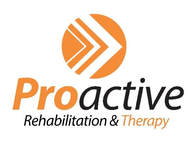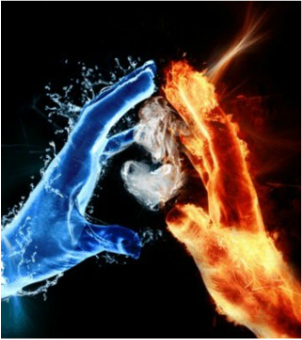Working with victims of trauma or domestic abuse is challenging to say the least. It takes tremendous trust in the therapist and the therapeutic process to feel safe, open up, and begin healing. These individuals have tremendous fear and apprehension not only of flashbacks of traumatic memories but also of their internal emotional state. Dysphoria is the word that describes the inner experience of the trauma survivor. Many of us are familiar with the antonym, euphoria, which is a state of bliss, the best feeling in the world. Dysphoria as the opposite of euphoria can be described as the worst feeling in the world. It is a chronic emotional state that is so uncomfortable that it compels many trauma survivors to suicidal ideation (thinking about suicide), self-injury, or suicide attempts. It brings to mind those teenagers we hear about in the news who had bright futures, but took their own lives due to the emotional impact of bullying or domestic abuse experiences.
"An emotion like numbing coldness from ice or the burning pain from a raging fire"
Dysphoria is not a singular emotion like happiness or sadness. It is more of a dialectical (opposing and fluctuating) emotion which can be described as feeling like either the numbing coldness from ice or the burning pain from a raging fire. An individual suffering from dysphoria may appear very calm and vacant or alternatively highly irritable and troubled. The adrenal hormone cortisol produced from the HPA (hypo-pituitary adrenal) axis or fight, flight, or freeze system causes changes in brain chemistry and emotional functioning overtime. In response to a chronic recurring threat that cannot be fought or evaded, the nervous system shuts down the emotions as part of the freeze mechanism. This mechanism is useful in certain hopeless cases such as being captured by a large hungry predator per se. Being in a chronic state of freeze resulting from trauma, however, is often unbearable and described as feeling empty or dead inside. Accompanied with this feeling of nothingness is a disconnect and detachment from relationships and a profound sense of aloneness. Some sufferers use self-injury to temporarily bring on or break out of the freeze state.
"Emotions may include overwhelming feelings of rage, fear, anxiety, sadness, shame, and/or guilt."
The painful fiery side of dysphoria is the mixture of unpleasant felt emotions that are experienced when memories of abusive events are triggered. These emotions may include overwhelming feelings of rage, fear, anxiety, sadness, shame, and/or guilt. It is a small wonder that a person experiencing such unmanaged distress may prefer narcotic drugs or the dissociative (detaching) freeze state.
Treatment for dysphoria involves establishing a safe and trusting relationship, DBT (dialectical behavioural therapy for teaching distress management) and Mind Body Trauma Therapy (for emotional pain and psychosomatic symptom relief). The combination of feeling safe, controlling and limiting pain, exploring anger, anxiety, and shame, and problem solving for lasting change can prove very effective. Once a trauma sufferer stops avoidance behaviour and starts engaging and working towards learning new coping skills, he/she is on the path to recovery.
Advocating for your health,
David Chochinov, O.T. Reg. (MB)
Occupational Therapist
"An emotion like numbing coldness from ice or the burning pain from a raging fire"
Dysphoria is not a singular emotion like happiness or sadness. It is more of a dialectical (opposing and fluctuating) emotion which can be described as feeling like either the numbing coldness from ice or the burning pain from a raging fire. An individual suffering from dysphoria may appear very calm and vacant or alternatively highly irritable and troubled. The adrenal hormone cortisol produced from the HPA (hypo-pituitary adrenal) axis or fight, flight, or freeze system causes changes in brain chemistry and emotional functioning overtime. In response to a chronic recurring threat that cannot be fought or evaded, the nervous system shuts down the emotions as part of the freeze mechanism. This mechanism is useful in certain hopeless cases such as being captured by a large hungry predator per se. Being in a chronic state of freeze resulting from trauma, however, is often unbearable and described as feeling empty or dead inside. Accompanied with this feeling of nothingness is a disconnect and detachment from relationships and a profound sense of aloneness. Some sufferers use self-injury to temporarily bring on or break out of the freeze state.
"Emotions may include overwhelming feelings of rage, fear, anxiety, sadness, shame, and/or guilt."
The painful fiery side of dysphoria is the mixture of unpleasant felt emotions that are experienced when memories of abusive events are triggered. These emotions may include overwhelming feelings of rage, fear, anxiety, sadness, shame, and/or guilt. It is a small wonder that a person experiencing such unmanaged distress may prefer narcotic drugs or the dissociative (detaching) freeze state.
Treatment for dysphoria involves establishing a safe and trusting relationship, DBT (dialectical behavioural therapy for teaching distress management) and Mind Body Trauma Therapy (for emotional pain and psychosomatic symptom relief). The combination of feeling safe, controlling and limiting pain, exploring anger, anxiety, and shame, and problem solving for lasting change can prove very effective. Once a trauma sufferer stops avoidance behaviour and starts engaging and working towards learning new coping skills, he/she is on the path to recovery.
Advocating for your health,
David Chochinov, O.T. Reg. (MB)
Occupational Therapist


 RSS Feed
RSS Feed